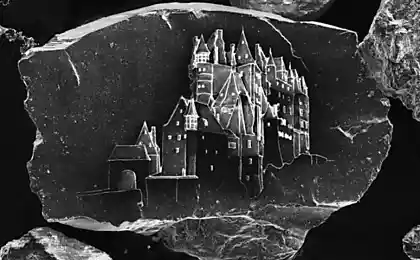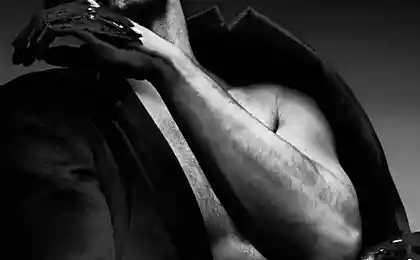473
Castles etched on tiny grains of sand from Vik Muniz

After four years of experiments with technologies and materials of the artist Vik Muniz (Vik Muniz) and researcher Marcelo Coelho (Marcelo Coelho) successfully completed a joint creative project — a series of images of castles engraved on microscopic grains of sand — the complete antithesis of the usual childhood sand castles. Delicate drawings with a length of less than half a millimetre are made on tiny grains of soil that are difficult to see with the naked eye. Muniz, known for his ability to use context to change the usual perspective of visual perception, in the past created huge, up to 500 meters in length image. The only thing that could see the audience standing on the ground, it is no apparent logic dug in the mud of the ditch. To see this work as a whole was only possible from a helicopter. However, about five years ago, Muniz is interested in the polar opposite direction — able to create designs that will be visible only in the multiplication.


To bring this concept to life, Muniz and Coelho has developed a unique technological process which includes the vintage projection device, and an innovative optical equipment. The first sketches Muniz drew using camera-Lucida — optical device, invented in 1807, which the artists of the XIX and XX centuries actively used for transferring existing designs on paper.


Ready outline Muniz sent Coelho, who for four years with varying degrees of success experienced different technology microgravity. For example, the laser is too often destroyed by soft grains of sand or, alternatively, did not give a clearly - visible image on a solid. As a result, the researcher stopped at the etching technique focused ion beam (FIB), which is often used in working with chip.

Answering a question on a choice of locks theme of the whole series, Muniz explains that he prefers to work with simple images that the audience has seen a million times, since the familiar image, the stronger the effect from the abrupt change of perspective. "When someone tells you it's a grain of sand, there comes a time when your picture of the world is falling apart and need to rebuild, explains Muniz. — You have to take a step back to ask yourself what is the image and what is its meaning." About the same as it happened with our understanding of painting after the invention of photography.

"I think that now the picture begins anew — adds Coelho. — A completely new kind. This is largely due to the fact that the merger of computers and optics to generate new, previously inaccessible ways of narrative".

Approval Coelho can be illustrated by a number of recent examples. One of them — amazing macro photography Linden gledhill of in which in detail shows the structure of the wings of butterflies and moths.
Source: p-i-f.livejournal.com/5729343.html























